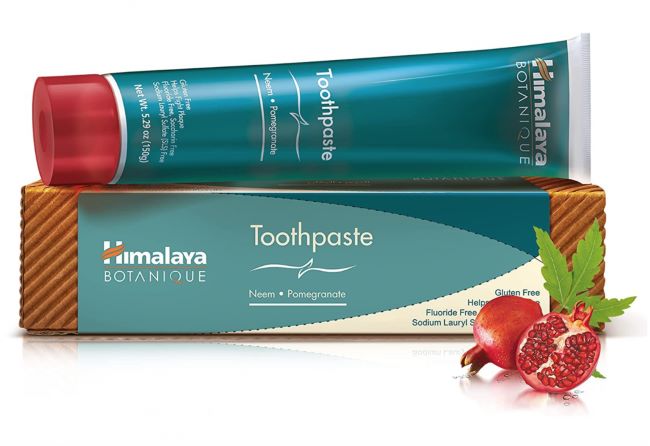Neem & Pomegranate Toothpaste Ingredients: Xylitol (Himalaya Birch Wood), Glycerin (from Vegetable Oils), Aqua (Water), Calcium Carbonate. Hydrated Silica (Natural Mineral), Punica Granatum Extract (Pomegranate)*, Lauryl Glucoside (from Coconut Oil & Sugar). Sodium Cocoyl Glutamate (&) Disodium Cocoyl Glutamate (from Amino Acids & Vegetable Oil), Stevia Rebaudiana Extract (stevia). Natural Flavour (using Essential Oils and Botanicals), Chondrus Crispus (Carrageenan) & Glucose, Menthol (from Peppermint Leaves)*. Xanthan Gum (Natural Thickener), Sodium Benzoate, Sea Salt, Potassium Sorbate, Thymol (from Thyme Leaf Oil). Emblica Ribes Fruit Extract (Vidanga)**, Terminalia Chebula Fruit Extract (Chebulic myrobalan)**, Terminalia Bellerica Fruit Extract (Belleric myrobalan)**. Phyllanthus Emblica Fruit Extract (Amla)**, Acacia Nilotica Bark Extract (Indian Gum Arabic)**, Melia Azadirachta Leaf Extract (Neem)**
Study:
This is a study that looked at the links between fluoride and impaired neurological development. From that study: “Recently, epidemiological studies have suggested that fluoride is a human developmental neurotoxicant. It reduces measures of intelligence in children. Placing it into the same category as toxic metals (lead, methylmercury, arsenic) and polychlorinated biphenyls. If true, this assessment would be higfluoride freehly relevant considering the widespread fluoridation of drinking water. Plus the worldwide use of fluoride in oral hygiene products such as toothpaste. To gain a deeper understanding of these assertions, we reviewed the levels of human exposure. As well as results from animal experiments, particularly focusing on developmental toxicity, and the molecular mechanisms by which fluoride can cause adverse effects.
Moreover, in vitro studies investigating fluoride in neuronal cells and precursor/stem cells were analyzed, and 23 epidemiological studies published since 2012 were considered. The results show that the margin of exposure (MoE) between no observed adverse effect levels (NOAELs) in animal studies and the current adequate intake (AI) of fluoride (50 µg/kg b.w./day) in humans ranges between 50 and 210, depending on the specific animal experiment used as reference. Even for unusually high fluoride exposure levels, an MoE of at least ten was obtained. Furthermore, concentrations of fluoride in human plasma are much lower than fluoride concentrations, causing effects in cell cultures. In contrast, 21 of 23 recent epidemiological studies report an association between high fluoride exposure and reduced intelligence.
The discrepancy between experimental and epidemiological evidence may be reconciled with deficiencies inherent in most of these epidemiological studies on a putative association between fluoride and intelligence, especially with respect to adequate consideration of potential confounding factors, e.g., socioeconomic status, residence, breast feeding, low birth weight, maternal intelligence, and exposure to other neurotoxic chemicals. In conclusion, based on the totality of currently available scientific evidence, the present review does not support the presumption that fluoride should be assessed as a human developmental neurotoxicant at the current exposure levels in Europe.”






Reviews
There are no reviews yet.